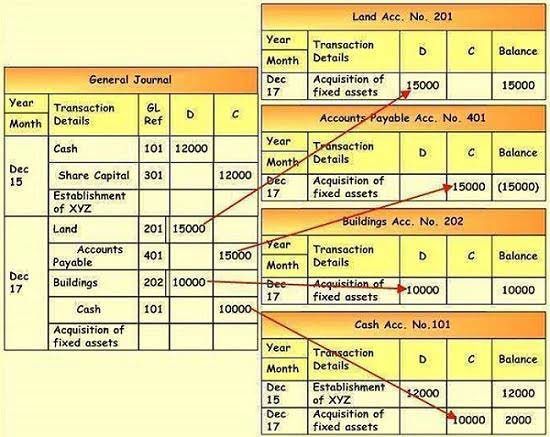
It’s Online Accounting not reported on any financial statements because it’s only used during the closing process and the account balance is zero at the end of the closing process. Temporary accounts are used to record accounting activity during a specific period. All revenue and expense accounts must end with a zero balance because they’re reported in defined periods.
Accounts

In other words, the closing entry is a method of making repayments on all the costs incurred within a given financial year. To complete, this method involves transfer of funds from revenue-generating accounts such as wages payable and interest receivable to an intermediary account known as income summary. Therefore, we can calculate either profit margin for this company or how much it lost over the year. The income summary is used to transfer the balances of temporary accounts to retained earnings, which is a permanent account on the balance sheet.
- Once we have obtained the opening trial balance, the next step is to identify errors if any, make adjusting entries, and generate an adjusted trial balance.
- The post-closing T-accounts will be transferred to thepost-closing trial balance, which is step 9 in the accountingcycle.
- A hundred dollars in revenue this year doesn’t count as $100 in revenue for next year even if the company retained the funds for use in the next 12 months.
- Our discussion here begins with journalizing and posting theclosing entries (Figure5.2).
- To close revenue accounts, you first transfer their balances to the income summary account.
- However, you might wonder, where are the revenue, expense, and dividend accounts?
- First, you close the revenue by debiting the revenue account for $100,000 and crediting the income summary for the same amount.
Can Sophisticated Accounting Software Simplify the Process of Closing Entries?

These sophisticated tools use advanced algorithms to categorize income and expenses, match transactions, and prepare the closing entries with precision – all with just a click and at the speed of electrons. If the period incurred a loss, the Retained Earnings account must nobly absorb the impact, ensuring that the loss is reflected in the equity of the company. Once this important shift is accomplished, your ledger is primed and polished for the upcoming period, and you start anew, applying one of the vital takeaways—closing entries steps performed consistently. Let’s investigate an example of how closing journal entries impact a trial balance. Imagine you own a bakery business, and you’re starting a new financial year on March 1st.

Step 3: Close Income Summary account
- For example, $50,000 in dividends is debited from Retained Earnings, reducing the balance available for future use or distribution.
- The total debits must equal total credits, confirming the accuracy of the closing process.
- Retained earnings are defined as a portion of a business’s profits that isn’t paid out to shareholders but is rather reserved to meet ongoing expenses of operation.
- The accounting cycle involves several steps to manage and report financial data, starting with recording transactions and ending with preparing financial statements.
- You’d never know exactly how your business performed over each period.
- In a sole proprietorship, a drawing account is maintained to record all withdrawals made by the owner.
Temporary accounts, also known as nominal accounts, are accounts that track financial transactions and activities over a specific accounting period. These accounts are « temporary » because they start each accounting period with a zero balance and are used to accumulate data for that period only. At the end of the accounting Certified Bookkeeper period, the balances in these accounts are transferred to permanent accounts, resetting the temporary accounts to zero for the next period. The permanent account to which the balances of all temporary accounts are closed is the retained earnings account in the case of a company and the owner’s capital account in the case of a sole proprietorship. First, all the various revenue account balances are transferred to the temporary income summary account.
- In just a few clicks, the entire financial year closing is streamlined for you.
- Chartered accountant Michael Brown is the founder and CEO of Double Entry Bookkeeping.
- However, when inventory and other assets are involved, it is essential to apply the latest inventory cost methods, such as FIFO or LIFO, waiting on the broader harmonization under IFRS reviews.
- It’s a discipline that creates a clearer, more comprehensible financial narrative, leading to better-informed decisions in the subsequent periods.
- Well, temporary accounts only track financial activities for specific timeframes.
- When dividends are declared by corporations, they are usually recorded by debiting Dividends Payable and crediting Retained Earnings.
Understanding Closing Entries
They include revenues, expenses, and dividends, and their purpose is to track the financial comings and goings within a specific period. These categories are crucial for the process of identifying potential deductions during the financial year. Once that period concludes, these accounts are emptied, ready to capture fresh data with the start of a new cycle. The income summary account is a temporary account solely for posting entries during the closing process. It is a holding account for revenues and expenses before they are transferred to the retained earnings account.

All expenses can be closed out by crediting the expense accounts and debiting the income summary. At the end of a financial period, businesses will go through the process of detailing their revenue and expenses. Notice that the balances in the expense accounts are now zeroand are ready to accumulate expenses in the next period. The IncomeSummary account has a new credit balance of $4,665, which is thedifference between revenues and expenses (Figure5.5). The balance in Income Summary is the same figure as whatis reported on Printing Plus’s Income Statement. Thebalance in the Income Summary account equals the closing entries net income or lossfor the period.
They’re designed to make the closing process more reliable and efficient. On the balance sheet side, closing entries move everything into retained earnings, which is a permanent account. To close your revenue account, you would debit the revenue account and credit the income summary for $50,000. No, permanent accounts carry their balances forward to the next accounting period. Revenue, expense, and dividends or withdrawals accounts are closed at the end of an accounting period. Manually creating your closing entries can be a tiresome and time-consuming process.








